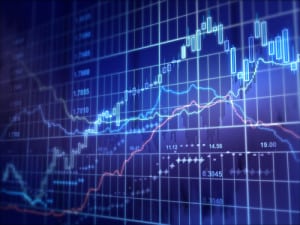
Real-time analytics will impact a lot of sectors as data production ramps up with IoT device networks and AI. Here are three sectors who may see it first.
Real-time data analysis and implementation are common in many industries. Manufacturing, digital marketing and military applications all depend on late-breaking, updated information to meet production demands, target specific demographics and act on classified intel.
In 2018, this trend is catching on among even more industries and professions — and the results are already showing tremendous potential to revolutionize business in the future.
1. Banking and Finance
Customers stand to gain a lot when their banks start applying real-time analytics to their services. According to a recent poll of various finance experts, real-time analytics provide the most value to risk mitigation and analysis. Fraud prevention and cybercrime are other areas of interest.
See also: Integrating real-time analytics to create personalized user experiences
That same report went on to highlight some of the major roadblocks to the widespread adoption of real-time analytics in banking and finance.
- 40 percent indicated troubles with collating and “integrating diverse data streams” into a single entity.
- 22 percent mentioned difficulties “accessing the necessary data streams” to even begin.
Rounding out the survey are those who reported “more significant challenges” — approximately 38 percent of respondents. Among these challenges are an industry-wide dependence on slow, disk-based hard drives and the various data formats — many of which are proprietary — that all offer valuable data.
2. Mainstream Advertising
Professionals in both offline and online advertising are embracing real-time analytics, too. Some of its applications are obvious. Advertisers can, for example, determine how effective their campaigns are from day to day, hour to hour and even minute by minute. The most proactive companies already use analytics to target evolving demographics and adjust their marketing tactics on the fly.
But other uses of real-time data analytics aren’t so apparent. Clear Channel Outdoor — one of the most prominent outdoor advertisers in the U.S. — recently launched a campaign to link their billboards with nearby consumer cell phones. Not only does this let them provide targeted ads directly to passing consumers, but the program — dubbed RADAR — can track travel patterns, visits to specific destinations and more.
According to recent studies, 46% of out-of-home advertisement impressions generate online searches. These campaigns drive consumer interest around new brands and interesting products. Tracking metrics like this, as well as incoming phone calls, face-to-face interactions and referrals is a straightforward method of that nearly any company can use to begin integrating real-time analytics.
3. Retail and Consumer Shopping
Key figureheads in the retail industry also realize the value of real-time analytics. Whereas business intelligence once took days, weeks or even months to compile data and report on consumer trends, modern systems can complete the task in a matter of seconds.
Thanks largely to machine learning technology, many of the next-gen systems become faster and smarter over time. By analyzing consumer spending habits and identifying specific patterns, these dynamic systems can provide accurate product recommendations and, in some cases, purchase household necessities before running out.
Other potential uses for real-time analytics in the retail sector include adjusting prices according to market conditions, promoting related products and generating highly personalized offers for goods and services. The most in-depth systems can even follow an online trail to determine what products consumers are more likely to buy, and even when they’re getting ready to make a purchase.
All of this amounts to a level of sophistication that’s new to most consumers. Many aren’t even comfortable with the idea of a company viewing your spending habits or browsing history. Nonetheless, innovations like this continue to shape industries like retail — for better or worse.
Embracing the Evolution of Real-Time Analytics
In the past, this deep level of analytics was primarily reserved for heavy industry and governmental applications. However, the current generation of real-time analytics is so sophisticated it has a relevant use in nearly every industry and profession. From analyzing market trends to tracking customer purchases and everything in between, the field of data analytics is definitely here to stay.




























